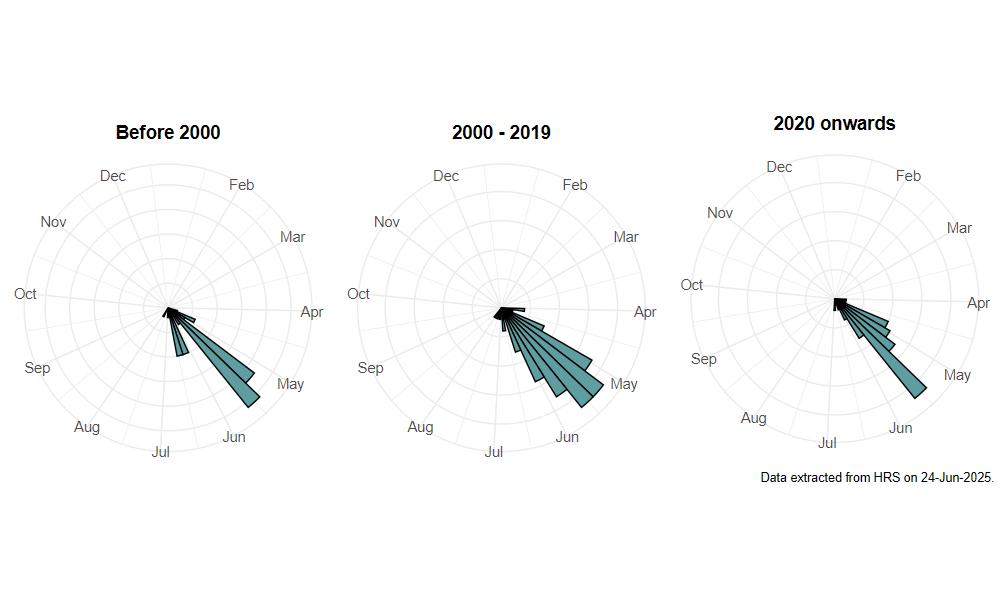Parasyrphus nigritarsis (Zetterstedt, 1843)
Identification
Identification difficulty = 4. ![]()
![]() according to Ball & Morris, 20241
according to Ball & Morris, 20241
Synonymy
Syrphus nigritarsis Zetterstedt in Coe(1953)2.
Biology
The larva is predaceous upon the larvae of Chrysomelid beetles on Alder Alnus glutinosa (Chrysomela aenea) sallows Salix sp. (Lochmaea capraea) and Dock Rumex (Gastrophysa viridula). These generally occur in the vicinity of sallows and Alder along sandy banks of rivers and streams. Adults visit umbellifer flowers and may also be found sun-basking on leaves.
Flight period
The following plots show the number of unique records per week excluding those reported to be of immature stages.

Status
Lower Risk (Nationally scarce) - Ball & Morris, 20143. Endangered (RDB1) - Falk, 19914 and Shirt, 19875.
Distribution
This is mainly a northern and western species that is widely distributed across Scotland, Cumbria and Wales, but is also reported from East Anglia, South Hampshire and Cornwall. Since its larval requirements have been better understood, it has been recorded much more frequently and is now known to be more widespread and frequent than was previously thought.

Trends
The following plots show the Frescalo TFactor vs year and a map of the rescaled frequency (all records) for the species.
-
Ball, S., & Morris, R. (2024). Hoverflies of Britain and Ireland. WILDGuides (3rd ed.). Oxford: Princeton University Press. ↩
-
Coe, R. (1953). Diptera: Syrphidae. Handbooks for the Identification of British Insects, 10(1), 1–98. ↩
-
Ball, S., & Morris, R. (2014). A review of the scarce and threatened flies of Great Britain. Part 6: Syrphidae. ( No. 9). Species status (pp. 1–130). Peterborough: JNCC. ↩
-
Falk, S. (1991). A review of the scarce and threatened flies of Great Britain. ( No. 39). Research and Survey in Nature Conservation (pp. 1–194). Peterborough: NCC. ↩
-
Shirt, D. (Ed.). (1987). Red Data Books: 2. Insects. Peterborough: NCC. ↩